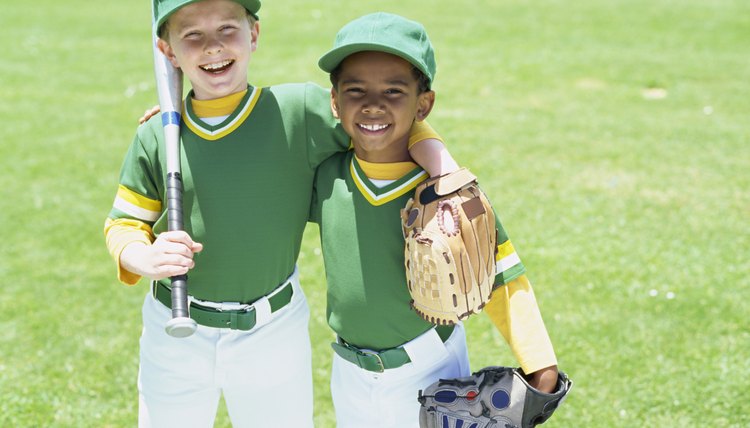How to Determine the Right Size Baseball Glove & Bat

Using equipment that is the wrong size can make a player uncomfortable and unable to perform at his best. Glove size is easy to determine based on age, position and feel. Finding the best bat size is more involved, but you should start with recommendations based on the player’s age, height and weight.
Determine Glove Size
Look for a baseball glove size based on the player’s age. In general, children younger than 8 should use a 9- to 11-inch glove. Kids between 8 and the early teens usually do best with an 11-inch glove. High school and adult players normally use a glove from 10 1/2 to 12 1/2 inches.
Choose a glove based on the player’s main position. Outfielders need a larger glove with deeper pockets to catch fly balls while infielders need smaller gloves with shallow pockets to allow for better ball control. Pitchers need a glove slightly larger than those used by infielders.
Try the glove on and squeeze a ball to test the feel. The glove should fit snug and not hang below the wrist. New gloves will feel stiff, but they become more flexible after breaking them in.
Determine Bat Size
Find the recommended bat length based on the player’s age, height and weight. Charts with size recommendations are available at most sporting goods stores. While these charts are not exact, they provide a starting point.
Select a bat with the best weight for your needs. Manufacturers base bat weight on a weight-to-length ratio. Younger players and those just starting out should use a lighter bat. Players can swing light bats faster with more control. Stronger, older players usually prefer a heavier bat to generate more hitting power.
Examine the size of the barrel and taper of the bat. The barrel is the top part of the bat that comes in contact with the ball. Larger barrels make for a larger sweet spot, but they make the bat slightly heavier. The taper is the bat handle diameter. Bats with smaller tapers are lighter in weight and easier to swing around, while bats with a thicker taper have less sting and vibration.
Warnings
When buying baseball equipment for children and teens, avoid buying a glove or bat that is too big so the player can grow into it. Gloves that are too large are uncomfortable and difficult to manage. Using a bat that is too long or heavy can result in bad swinging habits that may be difficult to break.
References
Writer Bio
Sharon O'Neil has been writing professionally since 2008. Her work has been published on various websites, including Walden University's Think+Up. She has worked in international business and is a licensed customs broker. She is currently a supervisor with a social service agency that works with families to prevent child abuse and neglect. She obtained a Bachelor of Science in business from Indiana University.
